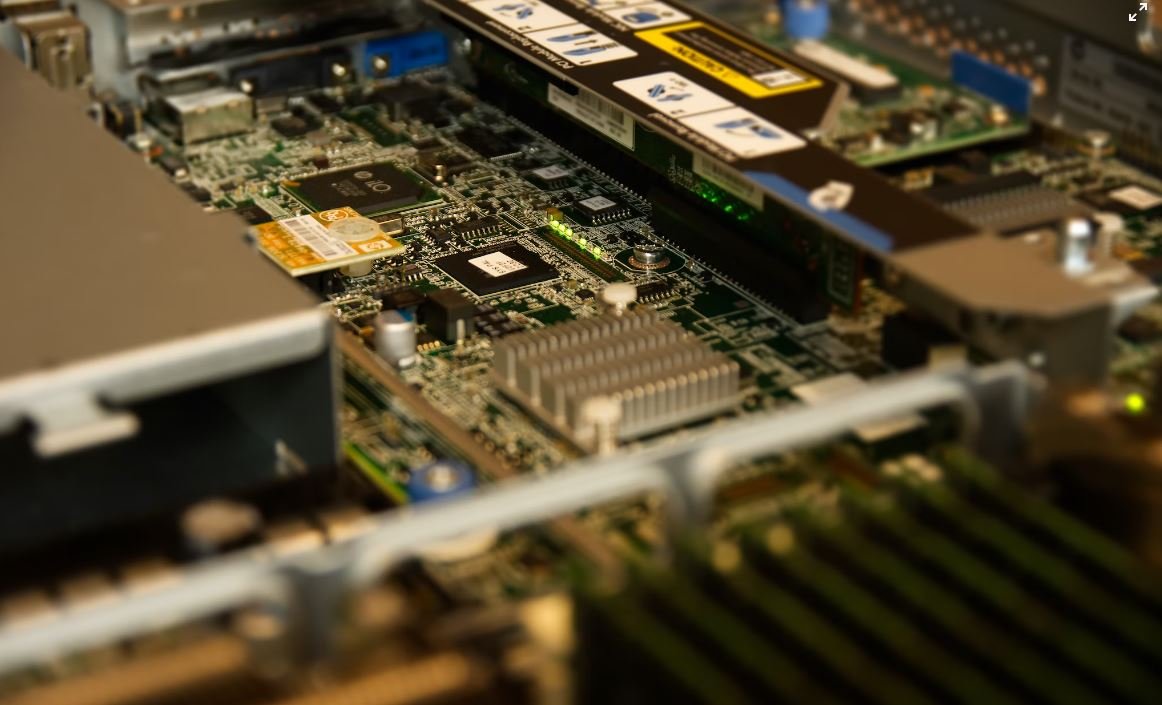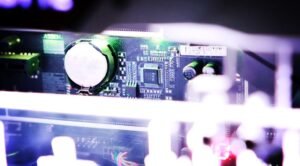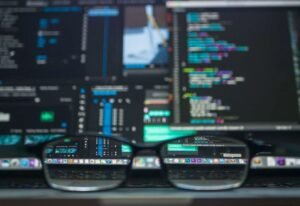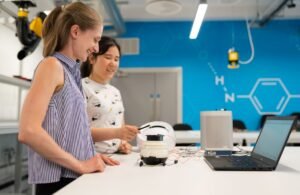Are AI and Automation the Same?
Artificial Intelligence (AI) and automation are two buzzwords often used interchangeably, but they are not actually the same thing. While both AI and automation involve the use of technology to perform tasks, they have distinct differences.
Key Takeaways:
- AI and automation are related but different concepts.
- AI involves simulating human intelligence in machines, while automation focuses on the execution of repetitive tasks.
- AI has the ability to learn and improve through experience, while automation typically follows pre-defined rules.
AI refers to the development of computer systems that can perform tasks that would typically require human intelligence. It involves creating algorithms and models that enable machines to analyze data, make decisions, and solve problems. AI technologies, such as machine learning and natural language processing, enable computers to “think” and “learn” in ways similar to humans, enabling them to perform complex tasks. AI is revolutionizing various industries, including healthcare, finance, and transportation.
On the other hand, automation focuses on the use of technology to streamline or eliminate repetitive tasks. It involves creating systems or processes that can work automatically, reducing the need for human intervention. Automation aims to increase efficiency, reduce human error, and improve productivity. Examples of automation include self-checkout machines, automated assembly lines, and chatbots that can handle customer inquiries. Automation is particularly valuable in industries where repetitive tasks are common, such as manufacturing and customer service.
While AI and automation have distinct objectives, there is often an overlap between the two. Many automated systems incorporate AI technologies to enhance their capabilities. For example, an automated customer service system may utilize AI-powered chatbots to provide personalized responses. This combination of AI and automation can lead to even more efficient and intelligent systems. Blending AI and automation can unlock new possibilities for businesses and organizations.
Here is a breakdown of the key differences between AI and automation:
| AI | Automation |
|---|---|
| Simulates human intelligence | Executes repetitive tasks |
| Can learn and improve over time | Follows pre-defined rules |
| Requires complex algorithms and models | Relies on streamlined processes |
It’s important to note that AI and automation are not mutually exclusive concepts. Successful implementation of AI often involves incorporating automation, and automated systems can leverage AI technologies to enhance their capabilities. By integrating AI and automation, businesses can achieve advanced levels of efficiency and intelligence.
In conclusion, AI and automation are related but distinct concepts. AI involves simulating human intelligence in machines and enables them to learn and improve, while automation focuses on the execution of repetitive tasks. Both AI and automation have significant benefits and can complement each other when used together. By leveraging these technologies, businesses and organizations can achieve greater efficiency, productivity, and innovation.

Common Misconceptions
Misconception 1: AI and Automation are interchangeable terms
One common misconception is that AI (Artificial Intelligence) and automation can be used interchangeably. While they are related, they are not the same thing.
- AI involves the development of intelligent systems that can simulate human intelligence.
- Automation focuses on the use of machines or technology to perform repetitive tasks without human intervention.
- AI can enable automation by providing intelligent decision-making capabilities to automate processes.
Misconception 2: AI and Automation will replace all human jobs
Another misconception is the belief that AI and automation will replace all human jobs, leading to mass unemployment. While automation can certainly eliminate certain repetitive tasks, it also creates new opportunities and shifts the demand for skills.
- AI and automation can enhance human capabilities and productivity, leading to the creation of new job roles.
- Jobs that require creativity, critical thinking, and emotional intelligence will be difficult to automate.
- Instead of replacing jobs, AI and automation may lead to job redesign and the need for reskilling or upskilling of the workforce.
Misconception 3: AI and Automation are only applicable in advanced industries
Many people mistakenly believe that AI and automation are only relevant in advanced industries such as technology or manufacturing. However, AI and automation have applications in a wide range of sectors and industries.
- In healthcare, AI can assist in diagnosing diseases and analyzing medical images.
- In retail, automation can be utilized for inventory management and personalized customer experiences.
- In finance, AI algorithms can help detect fraud and streamline financial processes.
Misconception 4: AI and Automation are infallible
There is a misconception that AI and automation always provide accurate and error-free results. However, like any human-made system, AI and automation can have limitations and make mistakes.
- Errors in data input can lead to biased or inaccurate outputs in AI systems.
- Complex decision-making in uncertain situations may challenge AI algorithms.
- Automation systems can encounter errors or malfunctions that require human intervention.
Misconception 5: AI and Automation are only for large organizations
Finally, some people mistakenly believe that AI and automation are only accessible to large organizations with extensive resources. However, AI and automation technologies have become more accessible and affordable in recent years, benefiting both large and small businesses.
- Cloud-based AI platforms allow smaller businesses to leverage AI capabilities without heavy infrastructure investments.
- Open-source AI frameworks and tools provide opportunities for developers and organizations of all sizes to incorporate AI into their operations.
- Automation technologies, such as chatbots and robotic process automation, can be implemented at different scales to improve efficiency even for smaller businesses.

Introduction
Artificial intelligence (AI) and automation are two rapidly advancing technologies that are transforming various industries. While there is often a misconception that AI and automation are the same, they are distinct concepts serving different purposes. In this article, we will explore some key differences between AI and automation through a series of informative tables.
Table: Key Differences between AI and Automation
This table highlights some of the fundamental differences between AI and automation, showcasing their varying characteristics, applications, and capabilities.
| AI | Automation |
|---|---|
| Capable of learning and adapting | Follows predefined rules and instructions |
| Involves the simulation of human intelligence | Performs repetitive tasks efficiently |
| Requires extensive training and data | Does not require learning or training |
| Can analyze complex data and patterns | Executes predefined tasks with precision |
Table: AI and Automation in Selected Industries
This table showcases how AI and automation are applied in various industries, demonstrating their impact on efficiency, productivity, and decision-making.
| Industry | AI Applications | Automation Applications |
|---|---|---|
| Healthcare | Diagnosis, drug discovery, patient monitoring | Robotic surgery, pharmacy automation, patient records management |
| Manufacturing | Quality control, predictive maintenance, supply chain optimization | Assembly line robots, robotic material handling, inventory management |
| Finance | Fraud detection, algorithmic trading, customer service chatbots | Automated transactions, loan processing, risk assessment |
Table: Pros and Cons of AI Implementation
This table outlines the advantages and disadvantages of implementing AI systems, weighing the potential benefits against the challenges and considerations.
| Pros | Cons |
|---|---|
| Improved decision-making | Data privacy and security concerns |
| Enhanced efficiency and productivity | High implementation and maintenance costs |
| Automation of mundane tasks | Potential job displacement |
Table: Impact of Automation on Jobs
This table presents statistical data concerning job displacement and job creation resulting from the implementation of automation in various industries.
| Industry | Job Displacement | New Job Opportunities |
|---|---|---|
| Manufacturing | -2.2 million (2000-2010) | +1.2 million (2010-2020) |
| Transportation | -1.7 million (2010-2020) | +0.8 million (2010-2020) |
| Retail | -0.9 million (2010-2020) | +0.6 million (2010-2020) |
Table: AI Usage in Everyday Life
This table showcases how AI technologies have become integral parts of our daily lives, enhancing convenience, entertainment, and personalization.
| Domain | AI Applications |
|---|---|
| Smartphones | Virtual assistants, facial recognition, voice recognition |
| Entertainment | Recommendation systems, content personalization |
| Home Automation | Smart thermostats, voice-controlled devices, security systems |
Table: The Rise of AI Startups
This table presents interesting facts and figures about the rise of AI startups, showcasing the rapid expansion and investment in this emerging sector.
| Year | AI Startup Funding (in billions) |
|---|---|
| 2015 | 2.4 |
| 2016 | 4.0 |
| 2017 | 7.0 |
Table: Ethical Considerations in AI Development
This table highlights some of the ethical challenges and considerations associated with the development and deployment of AI technologies.
| Ethical Challenge | Examples |
|---|---|
| Algorithmic Bias | Racial or gender bias in facial recognition software |
| Data Privacy | Unauthorized collection or misuse of personal data |
| Unemployment | Potential job displacement without corresponding job creation |
Table: AI’s Impact on Healthcare Outcomes
This table provides evidence-based insights into the positive impact of AI adoption on healthcare outcomes, including improved diagnosis accuracy and patient care.
| Benefits | Statistics |
|---|---|
| Increased diagnostic accuracy | AI diagnose lung cancers with 94% accuracy (study) |
| Reduced medication errors | AI systems decrease medication error rates by 50% (research) |
| Enhanced patient monitoring | AI-enabled remote monitoring reduces hospital readmissions by 35% (study) |
Conclusion
While AI and automation often intersect and complement each other, it is crucial to understand their distinctions. AI encompasses advanced technologies capable of learning and simulating human intelligence, while automation focuses on task execution and efficiency. Recognizing these differences allows us to utilize AI and automation effectively in diverse fields, improve productivity, and address potential challenges such as job displacement and ethical considerations. By leveraging the benefits of AI and automation wisely, we can propel industries forward and unlock new possibilities for a better future.
Frequently Asked Questions
Are AI and Automation the Same?
What is AI?
What is Automation?
How does AI differ from Automation?
What are some examples of AI?
What are some examples of Automation?
Can AI be a part of Automation?
Do all automation processes involve AI?
What are the benefits of AI and Automation?
What are the potential challenges of AI and Automation?





